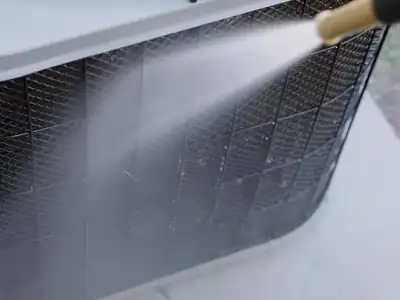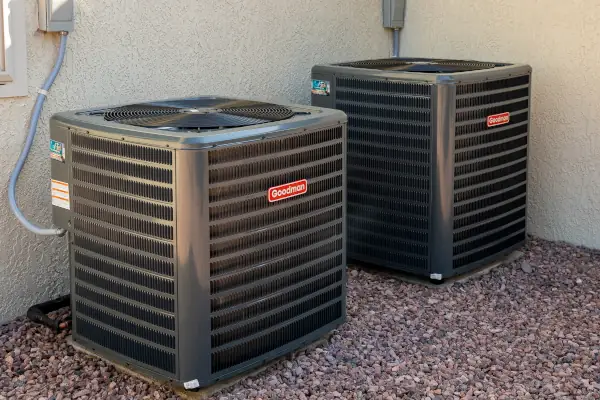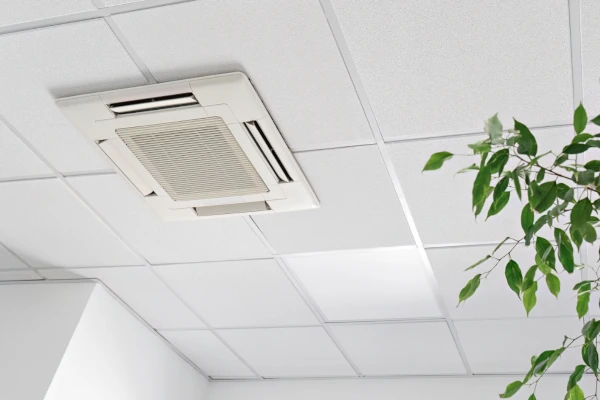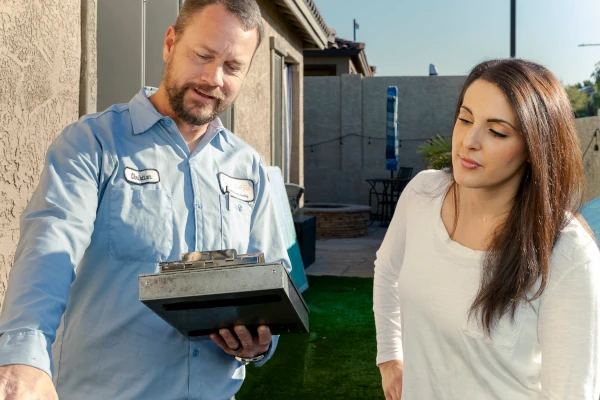By following a few simple steps, you can make your AC last longer, reduce energy consumption, and avoid costly repairs. This guide will walk you through essential AC maintenance practices that every homeowner should know.
Tip 1: Changing Air Filters
Clean filters are the cornerstone of AC efficiency. They trap dust, pollen, and other particles, preventing them from circulating in your home and clogging your AC system. A clean filter allows for better airflow, reducing strain on your unit and improving overall performance.
Most AC filters should be checked monthly and replaced every 1-3 months, depending on usage and environmental factors. However, homes with pets or in dusty areas may require more frequent changes. Some filters are washable, offering a reusable option.
There are various types of AC filters available, including fiberglass, pleated, and HEPA filters. Fiberglass filters are the most basic and affordable but least effective. Pleated filters offer better filtration, while HEPA filters provide the highest level of air purification but may restrict airflow in some systems. Learn more about changing air filters.
Tip 2: Cleaning The Condenser Coil
The outdoor unit of your AC system, also known as the condenser, plays a crucial role in heat exchange. Keeping it clean ensures optimal efficiency. A dirty condenser coil can significantly reduce your AC’s ability to cool your home and increase energy consumption.
How to clean the condenser coil
To clean the outdoor unit, first, turn off the power. Then, use a garden hose to gently spray the exterior fins, removing dirt and debris. Avoid using a pressure washer, as it can damage the fins. For stubborn grime, use a commercial coil cleaner, following the manufacturer’s instructions.
Aim to clean your outdoor unit at least once a year, preferably before the start of the cooling season. However, if you live in an area with high pollen, near construction sites, or have shedding trees nearby, more frequent cleaning may be necessary. Regular cleaning can improve efficiency by up to 15%. See more about cleaning condenser coils.

Tip 3: Clearing Out Your Drain Line
The condensate drain line removes moisture collected by your AC system. Over time, it can become clogged with algae, mold, and debris, leading to water damage or system shutdown. Regular maintenance is essential to prevent these issues, and insure your system lasts.
To clean the drain line, locate the access point near your indoor unit. Pour a cup of white vinegar or bleach down the line to kill algae and mold. For stubborn clogs, use a wet/dry vacuum to suction out debris. Perform this maintenance every 1-2 months during summer to ensure proper drainage.
Tip 4: Ensuring Proper Airflow
Unrestricted airflow around your outdoor AC unit is crucial for efficient operation. The unit needs space to draw in air and expel heat effectively. Poor airflow can lead to increased energy consumption and reduced cooling capacity.
Maintain a clearance of at least 2-3 feet around all sides of the outdoor unit. Regularly trim back vegetation, remove leaves, and clear away any debris that might obstruct airflow. Also, ensure that no objects, such as outdoor furniture or storage items, are placed too close to the unit. This simple maintenance can significantly improve your AC’s performance and longevity.
Tip 5: Ductwork Inspection and Sealing

Leaky ductwork can significantly reduce your AC system’s efficiency, allowing cooled air to escape into unconditioned spaces. This not only wastes energy but also puts extra strain on your AC unit. Regular inspection and sealing of ductwork can improve system efficiency by up to 20%.
Visually inspect accessible ductwork for signs of damage, such as gaps, holes, or disconnected sections. Use metal tape or mastic sealant to repair small leaks. For more extensive damage or hard-to-reach areas, consider hiring a professional. They can perform a comprehensive duct inspection and sealing, ensuring your entire system is operating at peak efficiency.
Tip 6: Thermostat Optimization
Your thermostat is the control center for your AC system, and optimizing its settings can lead to significant energy savings. Programmable and smart thermostats offer advanced features that can automatically adjust temperatures based on your schedule, potentially reducing your cooling costs by up to 10%.
Set your thermostat to 78°F (26°C) when you’re at home and awake for optimal energy efficiency. Program higher temperatures when you’re away or sleeping. If you have a smart thermostat, take advantage of its learning capabilities and remote access features to fine-tune your cooling schedule. Regularly check and update your thermostat’s settings to ensure they align with your current lifestyle and energy-saving goals.

Tip 7: Troubleshooting AC issues
It’s important to troubleshoot AC to make sure they last as long as possible. A malfunctioning AC will wear much faster than when properly functioning. It’s important to know when your AC’s acting up so you can fix it as soon as possible. This is why it’s important to know about signs your AC needs repair.
Tip 8: Saving Energy
Maximizing your AC’s efficiency goes beyond maintenance. Strategic use of fans can enhance cooling distribution, allowing you to set your thermostat a few degrees higher without sacrificing comfort. Ceiling fans are particularly effective, creating a wind-chill effect that can make a room feel up to 4°F cooler.
Proper insulation and weatherstripping play crucial roles in maintaining a cool indoor environment. Inspect your home for air leaks around windows, doors, and other openings. Seal these gaps to prevent cool air from escaping and warm air from entering. Consider adding insulation to your attic to reduce heat transfer from your roof.
Minimize internal heat sources to reduce the load on your AC. Use heat-generating appliances like ovens and dryers during cooler parts of the day. Install light-blocking curtains or shades to keep out the sun’s heat during peak hours. These simple strategies can significantly reduce your AC’s workload and energy consumption.
By implementing these maintenance tips and energy-saving strategies, you can significantly extend your AC’s lifespan, reduce energy bills, and ensure optimal performance. Regular care not only saves money but also contributes to a more comfortable and environmentally friendly home. Start incorporating these practices today for a cooler, more efficient tomorrow. Visit our AC Maintenance Page for our excellent offers.





